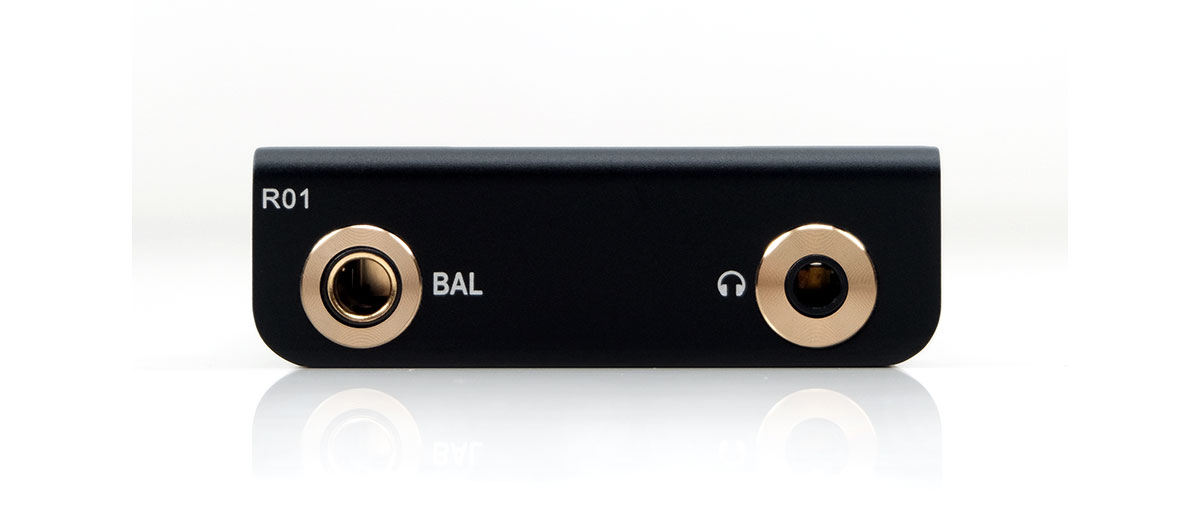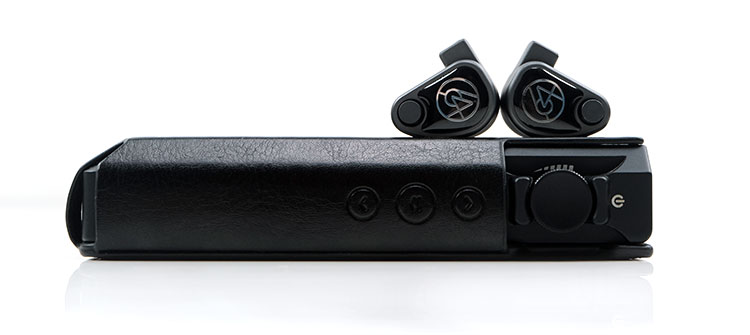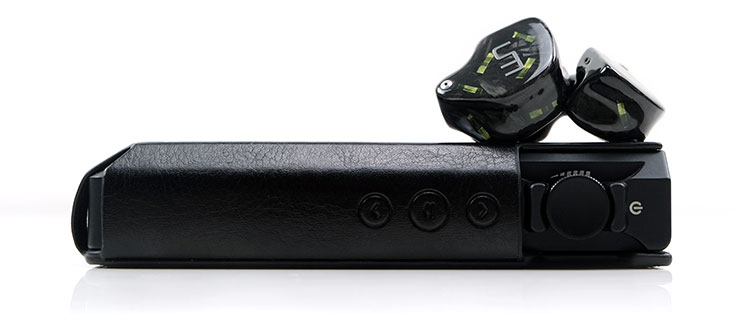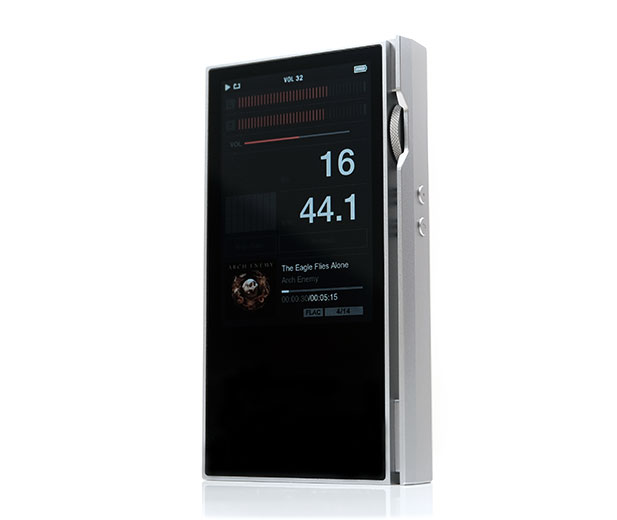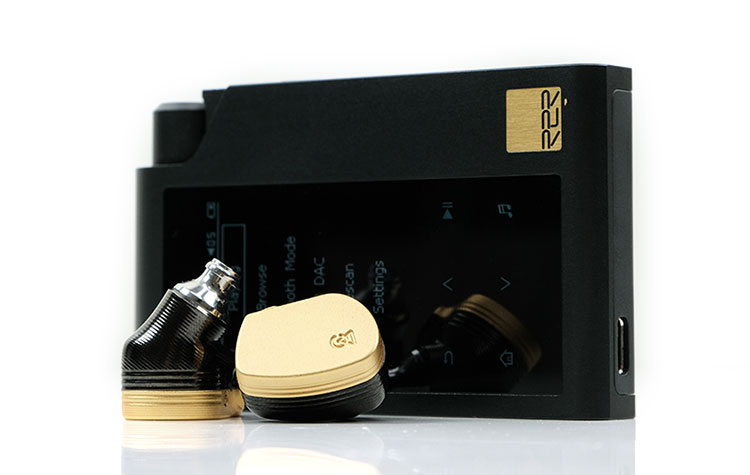Motherboard Comparisons
Of the cards we have reviewed to date, the R01 has the most natural and smooth-sounding timbre of the lot.
In a way, it almost negates the demand that Cayin releases a NuTube equipped motherboard because it contains some of the same characteristics of an excellent tube tone but with a potentially blacker background for a portable source.
T01
Compared to the other motherboards, the R01 is not as airy or as bright in the treble timbre as the T01 but it delivers more PRAT, warmth, and power on the low-end. The vocal harmonic balance is sweeter and smoother on the R01 rather than the T01’s more neutral and clean tuning.
E01
The R01 also has a superior dynamic range and ‘drive’ compared to the Class A of the E01 when using both SE outputs on the 2 motherboards. I would say it also edges out the Class AB of the E01 in terms of sub-bass weight and definitely more texture and body through the mids.
A01
If you are coming from the original A01 there does seem to be a marked improvement in dynamic range and instrumental separation with a blacker background.
The R01 also delivers more sub-bass power and a little more treble sparkle stretching the staging further than the A01 and creating a bit more space, especially for male vocals.
E02
The E02 is a lot closer in terms of low-end weight but not quite as rich and voluptuous sounding, perhaps a little more typical of an energetic and drier solid-state punch and pace.
The timbre is also a bit more delta-sigma with its fast ‘in-out’ decay rate, marginally cleaner tone, and a bit more staging width. It has more of that ‘polished sound’ I come to expect when comparing these two types of DACs.
The R01 sounds a bit more rounded and sweeter as well as being more relaxed for mids instrumental timbre with a slightly slower pace. You do get a richer texture and more detail in that texture, however.
Synergy
Efficiency
The R01 has enough in reserve to power pretty much any IEM out there without pushing the noise floor too high. In fact, the background was exceptionally dark, even with notoriously sensitive monitors such as the Campfire Audio Andromeda 2020 and the Solaris SE.
Neither balanced nor SE gave either IEMs issues in terms of background hiss and certainly a bit quieter than the balanced out of the previously reviewed E01 and E02 motherboards albeit with less power than the E02.
Another brownie point is the channel balance with the aforementioned gear. Both sounded quite centered on very low volumes with very little sway to either channel as you move up through the steps in either balanced or SE.
Cayin retains its excellent 3-stage gain control with the R01/N6ii pairing so I would advise going with low gain for super sensitive monitors. The current control from zero upwards sounds a bit more natural in terms of loudness.
Pairings
That little sub-bass emphasis the R01 combined with the R2R DAC’s excellent note texture detailing makes this a very nice pairing indeed with any monitor that has a bit of bass emphasis or an IEM with a bass performance drawn from a dynamic driver.
Monitors such as the 64 Audio U6t and the UM MEST MKII are excellent pairings with their boosted low-end performances sounding weighted and smooth without suffering from bloom or smear.
I give the edge to the MEST MKII and the Solaris 2020 with the R01. There is something really impressive in how well the R01 gels with dynamic drivers, especially when fleshing out that sub-bass texture and weight.
Though it does very well indeed with brighter monitors such as the JH Audio Contour XO I tend to prefer to pair this hot tamale with the likes of the P6 and P6 Pro from LP. The R01 just has a little bit more of a vocal shine and slightly less body in the upper mids and treble compared to these two smoother flagship R2R sources.
That slightly more neutral harmonic balance works much better on the likes of the Andromeda 2020 which has less treble brightness compared to the original.
Still, if you are coming from the likes of the E02, A01, or the T01, you will find the R01 a lot smoother on the Andromeda original treble performance so take that as more of a contextual to the performance of the LP flagships.
Select Comparisons
For comparisons purposes, we will deal only with the technical and performance side since the R01 is not a DAP in its own right but rather an integral part of the N6ii DAP which we have gone into some detail before here.
Luxury & Precision P6
$2999
Technical
The P6 was the first wholly discrete R2R DAP launched last year and a DAP we rate very highly in terms of performance. However, the P6 as a complete package offers neither a touch UI nor any WiFi streaming capability compared to the N6ii/R01 pairing. That is a big usability advantage right there for many modern audiophiles.
Both DAPs use discrete resistor ladder implementations for their DACs. The two ladders are hand assembled with tightly matching parameters rated at ±0.01%. Decoding is the same for both sources with a maximum of 32BIT/384kHz PCM and DSD256 decoding capability.
Both implementations do use control ports and for the digital bridge in the R01, we have to presume that the dual-channel multiplexer (analog switch) inside the P6 does some of the same things if not everything.
One thing to note is the volume control on the P6 which is an electronic relay array as opposed to the R01’s PGA2311UA which LP claims can reduce SNR performance as a result. And indeed, the P6 does have an SNR advantage at 123dB compared to the R01’s 115dB rating as well as an additional 5dB of dynamic range.
Another thing to note, the P6 housing was built around the R2R implementation with a class A amplification section including space for a line out whereas the R01 uses an opamp circuit design with no line out capability.
In terms of output power, the P6 does have a higher rating for balanced at 700mW into a 32Ω load compared to 480mW for the same load from the R01. The advantage is reversed for the SE output with the R01 capable of delivering a higher 240mW into a 32Ω load compared to 180mW on the same load for the P6.
Performance
In terms of the overall tone, the R01 is just a shade more neutral but I am not surprised by that as the P6 is definitely more to the warmer side with a decidedly analog-sounding performance.
Bass Power
Right at the lowest point in the FR the R01 does seem to produce a bit more sub-bass presence on our test IEM, the JH Audio Contour XO. You can pick up a little more on the R01’s energy and depth whereas the P6 has more focus on warmth and body through the entire bass and a more forward sounding lower-mids response curve.
Treble Presence
On the top side, the R01 also teases out a bit more treble presence compared to the P6 which is comparatively more relaxed and tranquil. That is probably an easy spot using the Contour XO which has a high energy upper mids and lower treble signature, to begin with.
On the R01 the Contour XO has a little more falsetto and head vocal shimmer and percussion crispness so notes do have more contrast and sound a little lighter in weight. Whereas the P6 plays it out very smoothly with more body but perhaps less perceived headroom as a result.
Mids Timbre
The P6 mids instrumental timbre is more euphonic, relaxed but also richer in tone. It has a very smooth, broad-sounding note structure with excellent texture. This is a great match for getting on top of the feisty Contour XO or the original clean treble of the Andromeda.
The R01 mids harmonic balance is more accurate but in turn, the ‘note weight’ is a shade lighter with a little more treble influence. On the Contour XO, the contrast in the timbre is more perceptible on percussion strikes and female vocals, becoming more of a high-energy experience. Rather than the original Andromeda, I would pick the smoother 2020 version for the R01.
Luxury & Precision P6 Pro
$3899
The Pro version of the P6 was reviewed earlier this year by us and I rate it as one of the best sounding DAPs I have ever heard.
Whilst the price disparity is significant and we should expect better numbers on paper it is worth comparing it to the R01 for those who want R2R in their DAP but do not have the budget in their wallet.
With the N6ii platform, you also have the option to stream the likes of TIDAL and Qobuz or use your own audio apps with LDAC capability which is not possible with the LP P6 Pro. I suspect the lack of modern connectivity might have put off some from buying the LP DAP platforms which have BT aptX only.
Technical
This time LP claims the P6 Pro 100 1/10000 resistor choice is the equivalent to two P6 R2R boards or the equivalent of 16 PCM1704K multibit chipsets in parallel. However, both the R01 and the P6 Pro resistor choices still offer those tightly matching parameters rated at ±0.01%.
Decoding capability remains unchanged from the P6 and that’s good news for potential R01 buyers as both have a ceiling of 32BIT/384kHz PCM and DSD256. However, where the P6 Pro comes into its own is in those all-important performance numbers.
For SNR, the P6 Pro has a significant advantage compared to the R01. SNR is now 125dB as opposed to R01’s 115dB rating. The dynamic range is not declared on the P6 Pro’s spec sheet but it would be at least +5dB over the R01.
For output power, the P6 Pro and the P6 offer the same specs including a line out function which is missing on the R01. That means a higher 700mW from a 32Ω load balanced and a lower 180mW single-ended.
One final note is the volume control on the P6 Pro is the same electronic relay array used in the P6 which will go some way to explaining the superior SNR numbers to the R01.
Performance
Tonally, the R01 is a closer match to the natural to slightly neutral P6 Pro than the warmer P6 but the immediate difference that leaps out is that dynamic range gap between the two. The P6 Pro has that R01 energy but it mixes it in with a more expansive and vivid performance.
The advantage the R01 had in terms of sub-bass weight is eaten up by the P6 Pro’s better slam and bass weight. It is less about tonal warmth with the P6 Pro with a truer to life, accurate but at the same time a vibrant signature with excellent instrumental and vocal separation.
Pitched beside it the R01 has also that same tilt to a more accurate harmonic balance, but the staging size and dynamic range just feel slightly diminished in comparison. The separation is excellent but the imaging is a bit more centered and strikes attack and decay not quite as lightning fast as the P6 Pro’s performance.
In terms of timbral differences, the P6 Pro somehow manages to shave off a lot of that euphonic tonality from the P6’s midrange timbre without losing weight and solidity.
Particularly so in the upper mids and treble where it does show off a bit more physicality and note weight compared to the lighter touch of the R01. I would still say the R01 just shades the P6 Pro in overall treble presence if not the corresponding weight. Vocals and percussion on the R01 do offer a bit more shine but slightly less solidity.
HIFIMAN R2R2000 Black
$2500
The R2R2000 Black was reviewed last summer and though technically not classed as a DAP you can use it just fine as a portable source. Like the LP DAPs, it also lacks a WiFi streaming option so TIDAL and Qobuz are out as well as a fully-enabled touch-based UI such as the one offered by the N6ii.
Technical
The R2R Black does not have the same discrete multiple resistor-based ladder implementation as the R01. Instead, the R2R2000 uses a classic dual multibit 24-BIT Texas Instruments PCM1704K DAC chipset which has been often referred to as an R2R DAC. Those are very hard to get now unless you shop on eBay but their jitter performance has always been excellent.
It is quite likely, that much like Luxury & Precision, Cayin could lay claim to their resistor ladder network implementation being the equivalent of several PCM 1704k’s in parallel, though quite how many I am not sure. For the P6 it was claimed as 8, for the P6 Pro it was stated at 16 so the math could well be in favor of the R01.
For decoding the R2R2000 is way behind at up to 24bit/192kHz native and up to 24bit/384kHz as well as DSD64 when using it as a DAC via USB-C. The R01 is capable of 32BIT/384kHz and DSD256 decoding without the need to plug into a PC or Mac.
For SNR and THD+N, the R2R2000 is rated at 115dB @ +/-3dB and 0.006% respectively compared to the R01 which is matched for SNR but offers a lower THD+N of 0.004%.
The R2R2000 Black does have slightly strong PO capability with an output rating of 500mW balanced compared to 480mW from the R01 and a stronger 320mW compared to 240mW for SE.
However, the noise floor on the R2R2000 is significantly higher without resorting to the R2R2000’s eco mode which clears out a lot of background hiss but at the cost of some dynamic range. Lastly, the R2R2000 does offer a 4.4mm balanced LO function but it is not a true line-out but rather a shared output.
Performance
There are pros and cons when comparing both of these two in terms of staging emphasis and overall tonal coloration.
First, however, I do have to speak a little about the noise floor because it is significantly higher on the R2R2000 Black with a lot of IEMs unless you switch to HiFi mode and go ultra-low gain in 4.4mm mode which does bring down the hiss substantially.
You will lose a lot of potential dynamic range if you are not careful whereas the R01 in low gain has a much better noise floor and is more sensitive IEM friendly.
The second is the level of control in the volume. The R2R2000 stepped attenuator is not as precise as the rotary dial of the N6ii/R01 for said same sensitive IEMs such as the Andromeda and the Contour XO. The more aggressive gain control of the R2R2000 can be tougher to handle unless you set it up as mentioned beforehand.
Tonal differences
Tonally, the R2R2000 is more neutral with a tighter but well-extended bass response, a more rapid instrumental note attack and decay, though not an overly bright treble. I was half expecting it to sound quite harsh with the Contour XO’s elevated upper mids and lower treble and whilst not a liquid tone by any means it was never a harsh performance.
The R01, on the other hand, sounds smoother, more voluminous on the low-end with enhanced mid-bass bloom and body, but also more sub-bass power. The R01 creates some delicious but slightly softer note texture from that into the lower-mids compared to the speed and ‘dryness’ of the R2R2000 performance.
Interestingly, however, the R01 sounds a little more high-fidelity on the treble, slightly more sparkle but also not as solid or physical. You could say more of an ethereal light touch on the treble overtone but nothing harsh-sounding either.
In terms of staging, both have excellent depth with the R01 potentially the taller of the two sources with that additional ethereal sparkle. The R2R2000 Black sounds the more transparent of the two sources. Its mid-bass and upper-bass imaging are more neutral with complex midrange passages benefitting from a more open midrange as a result.
Of the two, the R2R2000 is going to be the less forgiving of bad quality recordings whereas the R01’s smoother more liquid tone should allow a few duffers to slip by without any concern.
Our Verdict
If your budget will not stretch for the flagship P6 and P6 Pro from Luxury & Precision, then the Cayin R01 combined with the N6ii is an excellent substitute. For current N6ii owners, this is as cheap as it gets to go discrete R2R in a portable source.
It brings R2R into the realm of affordability for a lot more audiophiles and at the same time really opens up the possibilities with that Android platform from the main player for the likes of streaming TIDAL and Qobuz if required and a comprehensive and more familiar user-friendly touch control system.
Granted, you may have a question in your mind about how it stacks up with the new R2R DAP from HiBy, the RS6 so this is not the last time you will hear of the R01 in our review work. We will bring you a comparison of both when it arrives.
For now, the R01 is easily the most likable and natural-sounding motherboard Cayin has produced to date. It is not just a timbre ‘love-in’ either, technically it is competitive with an excellent low noise floor performance making it perfectly suited to a wide range of monitors out there today.
Cayin R01 Specifications
- 768kHz DSP Oversampling
- PCM Decoding 32-Bit/384kHz
- DSD native DSD256 Support
Output Parameters (4.4mm)
- Output Power: 430mW @ 32Ω
- Frequency Response Range: 10Hz-30kHz
- THD+N: 0.004%
- Dynamic Range: 113dB
- SNR: 115dB
- Channel Separation: 92dB
- Output Impedance: 0.68Ω
Output Parameters (3.5mm)
- Output Power: 240mW @ 32Ω
- Frequency Response Range: 10Hz-30kHz.
- THD+N: 0.004%.
- Dynamic Range: 113dB.
- SNR: 115dB.
- Channel Separation: 78dB.
- Output Impedance: 0.45Ω

